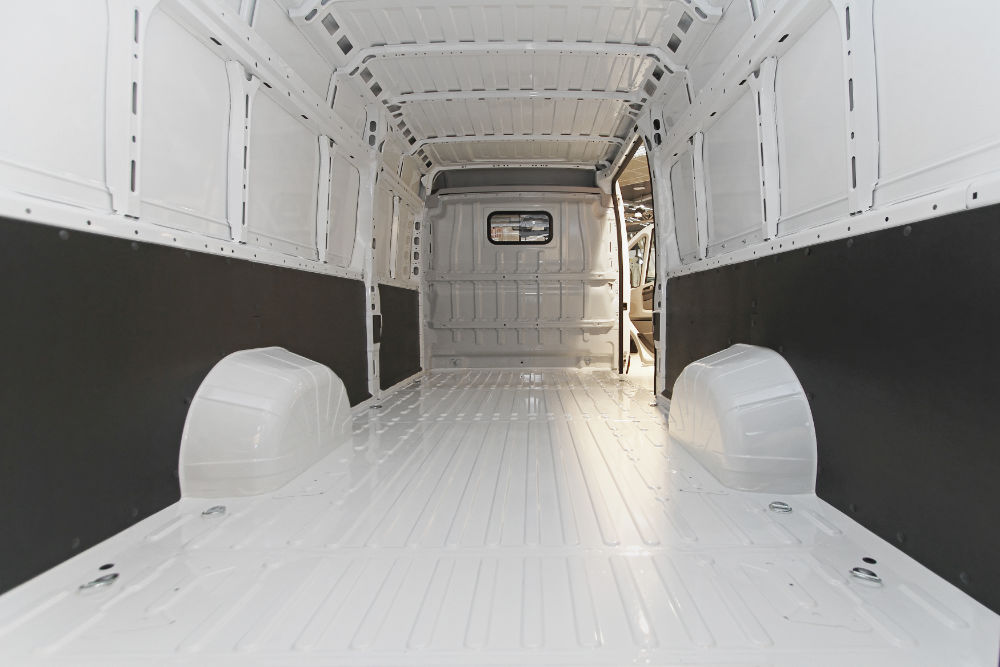
I’VE SEEN A LOT OF RIGS in the nine years I’ve been on the road, most of them created from something never intended for full-time living. They ranged from bare bones to handcrafted elegance, all demonstrating there’s more than one way to do this nomad thing.

Of the rigs I’ve seen, several of them had been modified since the last time I saw them. And I’ve also helped rework a couple. Then there were those that changed almost weekly because nothing had been built in and the owners were still figuring out what worked for them. Or because they’re constantly shuffling bins and bags around trying to find that thing they know is in there somewhere.
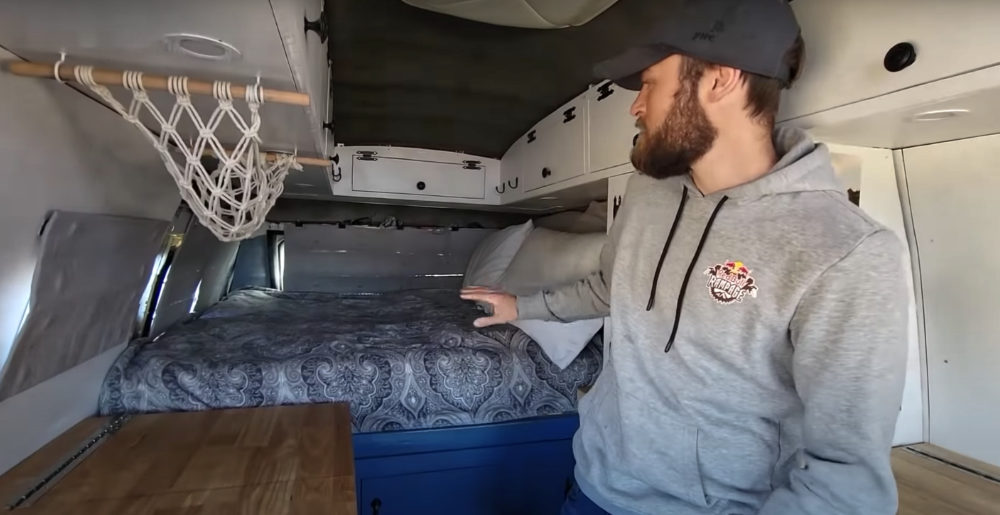
I had never lived in a van before but I had a fairly good idea how I wanted to built it out. Part of that was decided by the very useful steel tradesman’s cabinet that came with the van. That and a Twin XL sized bed pretty much set the agenda for the rest of the project.
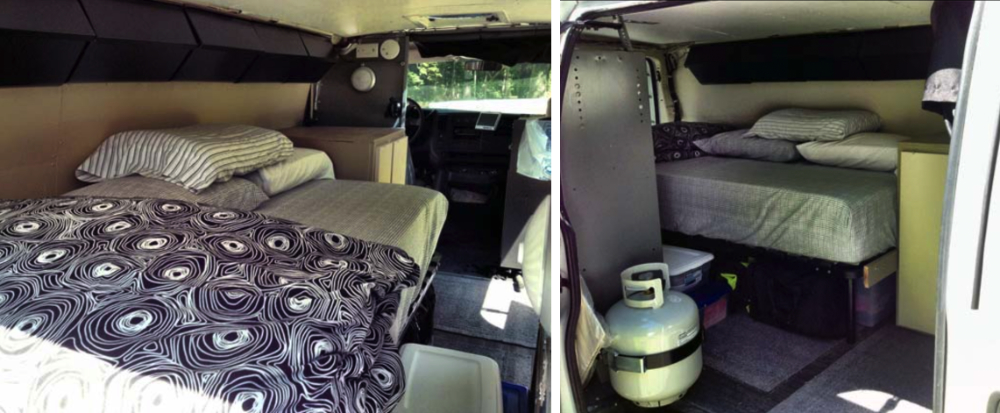
Even though I had sold my house, I was fortunate enough to have a friend with a well equipped shop, a sizable rural lot, and a welcoming heart. So I had the resources to build out the van — resources I doubted I’d ever have access to again. That’s how it is with many nomads: do it now because I may never have the chance again.
Then there are those with no building resources or skills. They tend to create their mobile living space with existing things. Bedframes, crates, cabinets, duffles, whatever. Some fellow nomads cluck their tongues at these no-build builds, but I think they might be a smarter way to go.
It’s Less Expensive
With the cost of lumber, hardware, and such being what it is these days, repurposing furniture you already have or that you picked up cheap (maybe free), or getting some plastic bins and drawers, leaves you with a lot more cash in your pocket.
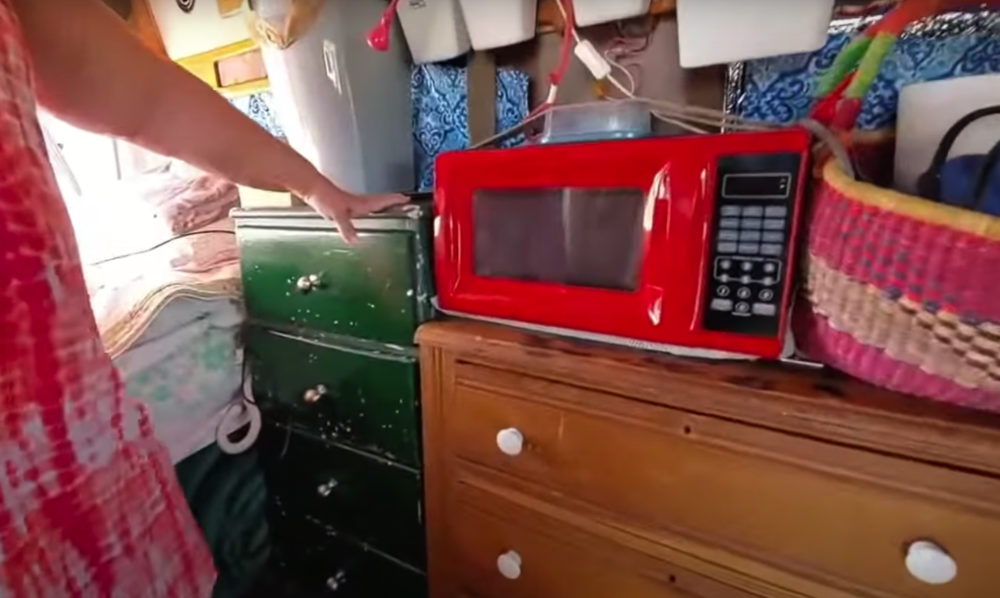
It’s Easier
Just some simple hand tools (if any) and no special skills. Simply load the furnishings into the vehicle, anchor it down, and you’re good to go.
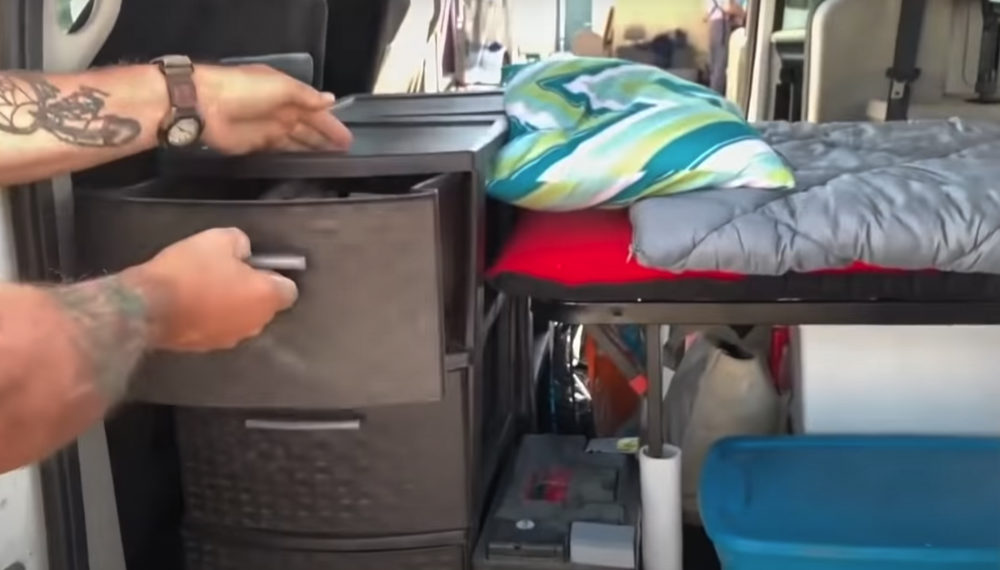
It’s Flexible
You can change the arrangement, you can swap things that aren’t doing the job for things that will — all without disassembling chunks of the interior and feeling like you’re throwing away all the time and money that went into it.
I saw an article about a new small travel trailer with a modular interior. The sink, stove, cabinets, bed base and such were all same sized cubes you could arrange and rearrange. They wanted a pile of money for the cubes, but you can get the same kind of flexibility with a no-build build.
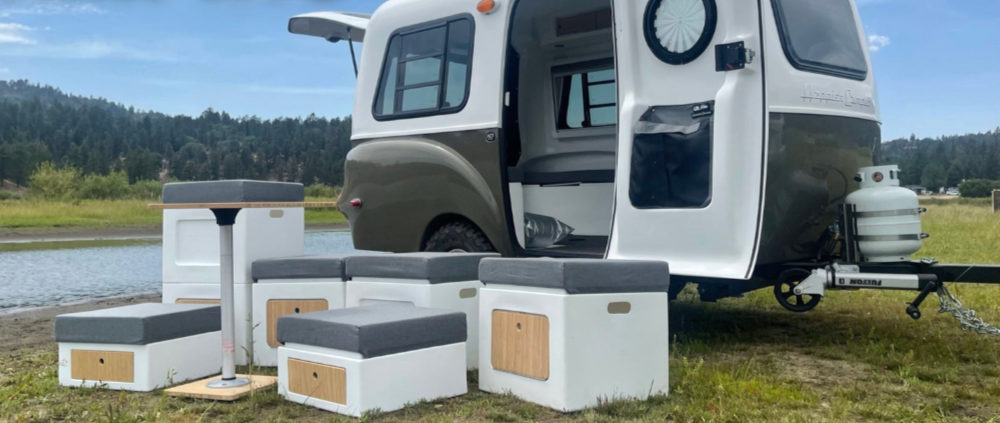
It’s Faster
Those of us who’ve built out our vehicles spent a lot of time agonizing over our plans before we even started construction. Then there’s the actual time doing the work. Even if it’s a process you enjoy, it’s time that’s keeping you from launching. Some people don’t want to waste that time. And some don’t have a choice — they need to go now.
It clarifies your priorities
Why am I doing this nomad thing? What do I want from it? What do I need in order to do that? What price — materially and psychologically — am I willing to pay for it?
I saw a rig at RTR that got me thinking. In the back of a guy’s Astro van was a folding cot and sleeping bag, a couple of milk crates — one with stuff in it, the other upside down as a table — a couple of duffles, a cooler, a battery and folding solar panel, a propane stove/heater, a 5-gallon bucket, and a guitar. It wasn’t Instagram-worthy, but it was functional. The man was comfortable and contented. Hmmmm, I thought, maybe I could do that next time, after my van dies.
So, if you’re a veteran nomad, which way did you go with your rig? Plain or fancy? Would you do it differently if you could do it over again? And if you’re a first-timer who hasn’t set up your rig yet, what are your plans?

I very much like the no build but no matter which way one chooses, if those crates and cots etc aren’t bolted down, I would have a full barrier between that and the cab.
Even many build outs concern me from the perspective of safety. Drawers with those tiny latches that are used will stay closed in normal driving conditions but in even mild accidents will fly open and everything in it becomes a potential lethal weapon.
If you have friends that work in the OR, ask them for an instrument magnet pad.
Anchoring everything is the biggest challenge in my opinion. When driving non anchored items may move around.
bungee haven awaits u lol
I needed to build out my Kia Sedona for an extended roadtrip from Cleveland to Montana with a raised platform for storage underneath. After removing the 3rd row fold flat seats completely and the second row (all seats are in my garage), I had an idea to use PVC frame work and 3/4″ plywood for the deck. I measured repeatedly, cut and glued PVC pipe into 4 removable sections, starting with the back by the liftgate. Built around a Lifetime cooler (as good as Yeti and Rtic but way cheaper). The plywood platform is cut into 3 sections with the middle and back sections piano hinged together so the back section can be propped up for a back seat. Height is tall enough that large Costco cardboard boxes fit underneath to hold clothes, food and cooking pots, utensils plates etc. In retrospect, stuff sacks is a better option for clothes. I used a 1 burner screw on (16 oz cylinder) propane stove that works great. Coffee, tea, one pot meals (canned chicken with teriyaki veggies, rice or noodles with red sauce, oatmeal etc.) The PVC frame took 2 weeks to build. Sniffing glue is no fun so make sure you have good ventilation. 25 days on the northern route (no interstates), lots of off the beaten path and roadside attractions made our journey amazing. Previous 3 month roadtrip my platform frame was made of wood. I keep saying we need a bigger van but so far the mpg keeps us in a minivan. Previous builds were my first Sedona, Chevy Astro, full size short wheelbase Chevy C10 van and a Chevy 10 Stepvan
I was able to create a practical living space inside of my step van. The interior is 16′ x 6.5′ with a 6′ ceiling. I had limited resources so I built it out of plywood and reclaimed pallet wood. It’s not pretty but it does work well enough for this poor old man. I am contemplating a remodel to accommodate a wood stove. Tearing out all the pallet wood framing is an easy thing to do. I can reuse each piece over and over in different configurations as I use deck screws instead of nails. Therefore it is easy to slap together and equally easy to disassemble. I can use those deck screws over and over and over. Nothing is thrown away and nothing is wasted.
Wonderfully written material, love it, love also the ingenuity & creativity of nomads. Lovely & expressive furniture / positioning of them caught by the pictures, Al…U rock !!????♥️
HI Al,
I built out a Promaster 2500 cargo van in April 2020. I hired a carpenter to help me lay it out. I wanted something that I could stand up in and work from if needed. I’m pleased with the way it all turned out, but if I was doing it all over again, I would not have invested so much in solar. I would have gotten a blue yetti or something comparable to service my needs. After traveling for 2 years, I discovered, less of everything is better. Fancy doesn’t impress me at all. I like homey lived in look and feel.
The bed is probably the most important item to consider. Someone can repurpose everything else for their needs.
Carol, hi ! Your van arrangements must be very comfy; be happy & don’t regret the amount of solar U posses, have read many nomad stating ‘ you never have too much solar power ‘… My regards: Lucy.
I have figured out that, if I need to do so, I could fit my twin bed, my bucket toilet which is currently in storage, my 3-drawer dresser, my desk chair, and my desk with the top cut shorter into a raw van and have all the furniture I actually need. I would then need something to power a small microwave and a cooler and I’d be all set. I already have water jugs with a spigot and a dish pan. All my clothes fit into two drawers of the chest so the other drawer and desk cubbies, maybe with tubs under the bed, would likely provide enough storage for everything else I need.
I have a GMC cargo van. I did a very rough sketch, then winged it as I built. I knew the certainties (isulation, paneling, LED lighting, flooring) but everything else I just figured out as I went.
I have reconfigued some, but that’s the fun of it.
It’s a small space compared to other vans, but quite comfortable.
I’ve had my Ford 150 cargo van for two years. The only thing I’ve had installed is a floor, fan, and swivel chair. Every time I think I know what I want my van to look like I change my mind. So for me, for now, I’ll just have shiftable items rather than an actual build.
I’m hoping to get to RTR 2023 to see in person what others have done. There are so many clever ideas out there.
1991(?).
Eugene, Oregon.
1986 Chevrolet Astro.
4.3, 700R4, 100,000 miles.
We acquired it half beat to death from a plumbing contractor.
We tossed in some car-camping gear, spent most of a year surfing Costa Rica.
We never considered a ‘build’ (or a ‘build-out’), we were having too much fun.
A half-decade later, we sold it for more than we paid… to another plumbing contractor.
.
We did much the same with another dozen commercial-based rigs:
* no or minimal modular conversion
* use the daylights out of it
* return it to the commercial operators.
We usually earned a profit.
.
2003, we converted a 1996 Ford CF8000 box-van to our concept of an ExpeditionVehicle.
Our interior is modular, everything easily movable and re-movable.
Nearly two decades full-time live-aboard.
Could it be returned to the commercial market?
Sure, although we are having too much fun.
After I read this the first time, I thought, he’s walking around in my head….again. ?
I am, and it’s scary in here.
I have the skills so I had to go for all the bells and whistles. One guy I saw as a Youtuber lives well in a normal height van with no extensions or bubble tops. I took that method and designed my own cheap Class-B RV. That left the entire roof for solar as I put all the ventilation in the rear 14 inches of a mechanical room. I ducted the forward rooms to the back space. Next from the rear is the wet bath, toilette / shower all done in FRP and aluminum trim. That takes 29 inches out of the length. Beyond that is my bed and primary storage. That leaves a huge free space that acts as a living room. It’s an all purpose space that uses folding tables for a makeshift kitchen and dinning. It’s big enough to be used with a reclining camp chair. The bed doubles as a couch running down the driver side behind the driver seat and the bathroom wall. The solar is big enough to do all cooking with electric. It even heats a 4 gallon electric water heater for showers. It has 34 gallons of fresh water and 31 gallons of black water capacity. Basically it’s a poor man’s Class-B that cost me under $10,000. That’s if you don’t count my labor.